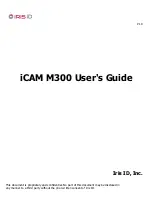
17-1
17 Synchronizing Mode
Synchronous recording and synchronous playback can be performed by connecting two
recorders using the sync cable SCK-10 (sold separately) and setting both recorders to the
synchronizing mode.
This means that the number of channels can be doubled (maximum 256 channels) without
changing the analog data signal bandwidth. The channel mode for the master and slave
units can be changed so that signals of different bandwidths can be recorded or played back
simultaneously and the input data mode can be changed so that signals of different analog
and digital formats can be recorded or played back simultaneously.
17-1 Before Operation
•
Be sure to turn off the power switches of both recorders before they are connected with
the sync cable.
•
Power is supplied separately. Supply the specified power to both recorders and any
channel expansion units.
•
Be sure to set one recorder as the master and one as the slave. Use the digital switch on
the rear panel for the setting.
•
If the recorders are not connected by the sync cable, both recorders operate as master,
regardless of the setting of the digital switch on the rear panel.
•
When the Self-check or Calibration is to be performed, each unit Master/Slave must be
performed individually by disabling synchronous mode (e.g. the switch on the Slave
unit set to Master).
•
When IRIG-B timecode signal is used during synchronized recording, input the
timecode signal only to the master (i.e. do not input the timecode signal to the slave).
•
When the recorder is connected through the sync cable, be sure to supply the power to
both master and slave units.
















































